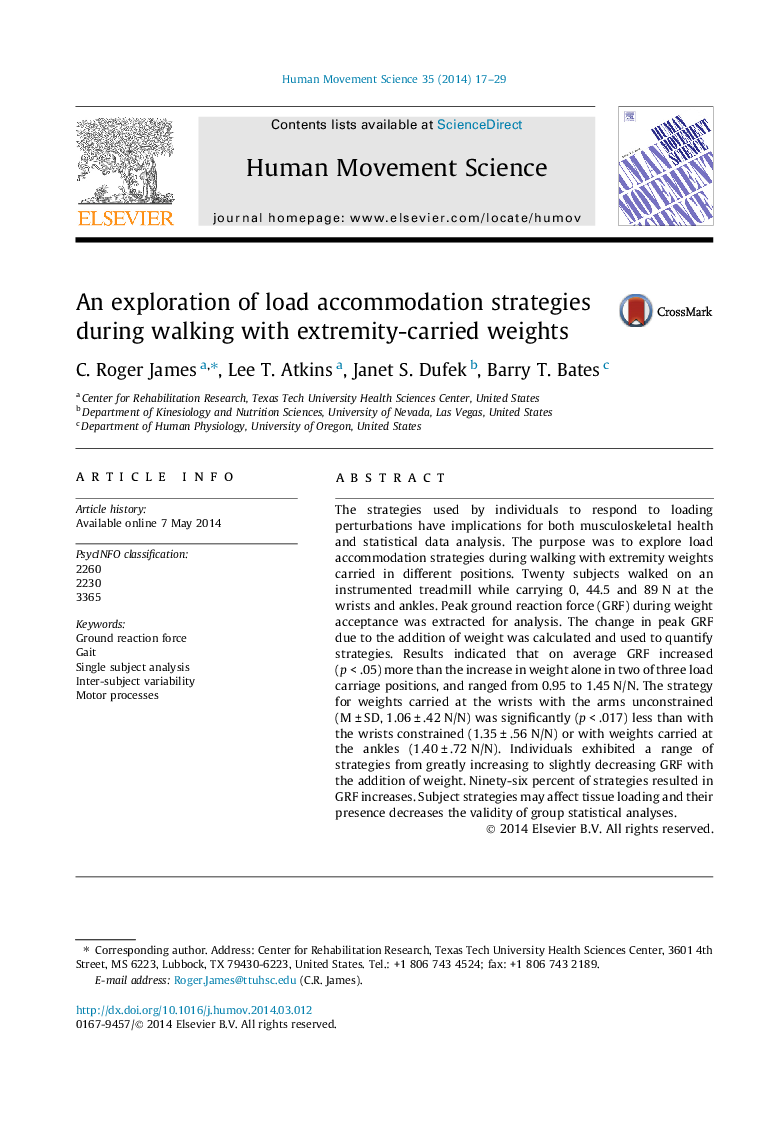| Article ID | Journal | Published Year | Pages | File Type |
|---|---|---|---|---|
| 928306 | Human Movement Science | 2014 | 13 Pages |
•Subjects walked while carrying weights at the wrists and ankles.•Mean peak ground reaction force increased more than the increase in carried weight alone.•Load carriage position affected the pattern of ground reaction force increases.•Individual subjects exhibited different strategies for accommodating to weight increases.•Subject strategies have implications for tissue health and the validity of group analyses.
The strategies used by individuals to respond to loading perturbations have implications for both musculoskeletal health and statistical data analysis. The purpose was to explore load accommodation strategies during walking with extremity weights carried in different positions. Twenty subjects walked on an instrumented treadmill while carrying 0, 44.5 and 89 N at the wrists and ankles. Peak ground reaction force (GRF) during weight acceptance was extracted for analysis. The change in peak GRF due to the addition of weight was calculated and used to quantify strategies. Results indicated that on average GRF increased (p < .05) more than the increase in weight alone in two of three load carriage positions, and ranged from 0.95 to 1.45 N/N. The strategy for weights carried at the wrists with the arms unconstrained (M ± SD, 1.06 ± .42 N/N) was significantly (p < .017) less than with the wrists constrained (1.35 ± .56 N/N) or with weights carried at the ankles (1.40 ± .72 N/N). Individuals exhibited a range of strategies from greatly increasing to slightly decreasing GRF with the addition of weight. Ninety-six percent of strategies resulted in GRF increases. Subject strategies may affect tissue loading and their presence decreases the validity of group statistical analyses.
